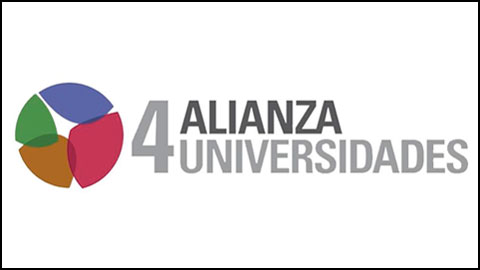A4U Alliance's IUNE 2024 Observatory report presented
According to data from the IUNE 2024 Observatory of the A4U Alliance, compiled by the INAECU Institute (UAM-UC3M), the evolution of the number of senior lecturers in public and private universities has varied substantially in the past decade, with a decrease in public universities and an increase in private universities.

The evolution of the number of permanent professors in public and private universities has varied substantially over the last decade. In the case of the institutions that form part of the Spanish Public University System (SUPE), the growth in the number of staff (civil servants and those on permanent contracts) has been gradually decreasing. However, the number of teaching staff in the private system (SUEPr) has been growing at annual rates of around 6%, reaching 11.73% in the last period. This is one of the conclusions drawn from the 2024 annual report of the IUNE Observatory, which has just been published and which belongs to the Alianza 4 Universidades (A4U), formed by the universities Autónoma de Barcelona (UAB), Autónoma de Madrid (UAM), Carlos III de Madrid (UC3M) and Pompeu Fabra (UPF).
This report, prepared by the Instituto INAECU (UAM-UC3M), monitors the R&D&I of the SUPE through 42 indicators in eight major dimensions: scientific activity, analysis by areas of knowledge, emerging scientific activity, training capacity, competitiveness, funding, innovation and teaching staff.
Regarding productivity per lecturer, in the case of SUPE, productivity has been growing annually until 2021 (with 1.15 documents per lecturer), decreasing slightly in 2022 to 1.02%. "This result is consistent with the annual increases in production and, in practice, with the lack of replacement of the teaching staff at public universities," say the authors of the report. However, in SUEPr, productivity per lecturer remains stagnant at around 0.4 documents, despite the higher growth of the teaching staff.
General slowdown
The new edition of the annual report of the IUNE Observatory shows a slowdown in the fall of the main research indicators of the Spanish University System (SUE) with respect to those observed since the financial crisis of 2008, with a gradual recovery from 2020 onwards.
According to the data in this edition, the number of scientific publications has gone from growing annually at an average of 5.92% to 4.86% (practically one percentage point less). On a similar scale, the average productivity of the SUE (measured by the number of publications per professor) has decreased from 6.32% to 5.47%. "These data confirm the trend of recent observatories in which decreases in these indicators have been observed, which are due, in part, to reductions in the number of teaching staff at public universities, which have fallen by 0.6% annually in the current decade," say the authors of the report.
In terms of research collaboration indicators for the period studied, the percentage of publications in international collaboration stands at 50.8%, increasing over the years at an average annual rate of 6.5%. On the other hand, 26.1% of publications are in national collaboration, with an average annual growth rate of 4.4%. Finally, non-collaborative publications account for 23.2% of the total and have been gradually decreasing, with the exception of the years 2020 and 2021, when they experienced a slight upturn.
Slightly more than half (51%) of the scientific work of the SUE is published in high-visibility journals (of the so-called first quartile), of which 7.8% appear in the top three journals of their subject category (Top3). As for the percentage of open access publications, there has been a considerable increase in the total number of SUE publications, as they have almost doubled (from 39.8% to 73.48%) in the decade studied.
In relation to innovative activity, the number of patents registered by the Spanish Patent and Trademark Office (SPTO) has been decreasing notably since 2014 (when the maximum value of the series was reached, with 665 patents). In 2020 it reached its minimum value and has been rising slightly in successive years, reaching a total of 232 patents in 2022, the last year of the study.
The IUNE Observatory is supported by the Ministry of Universities, as well as by a large number of institutions such as the National Agency for Quality Assessment and Accreditation (ANECA), the Conference of Rectors of Spanish Universities (CRUE), the Centre for the Development of Industrial Technology (CDTI), the Agency for the Quality of the University System of Catalonia (AQU Catalunya) and the Quality Agency of the Basque University System (Unibasq).
More information:
https://iune.es/